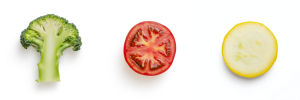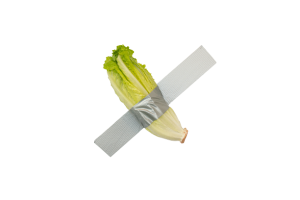There are many ways to classify food. You can go by flavor, taste, source, etc. Each of these perspectives to classify foods can produce many ways to organize foods. If you read an article or two from our titles, you probably know that we are here for nutrition. In this one, we will teach you my unique method to classify food types according to their nutritional values. I call this method Building Blocks Classification and I used it for 5 years to stay healthy and be in shape, and it always made me see food clearer. Let’s jump right in.
Table of Contents
What are food groups?
Let’s start by defining food groups. A food group is a collection of foods that share similar nutritional properties or biological classifications. The most common food groups you hear about are Dairy, fruits, cereals, legumes, meat, confections, vegetables, and water. This classification is done according to the origin of the food and it does not do a very good job of telling you about the nutritional value of the food. so I decided to make the new classification I am about to show you. Let me start by telling you the story.
Creating Food Types
When I started dieting, I was looking at the nutritional values of the foods I am eating all the time, I sometimes go as far as to memorize them. As a result, I began to spot patterns. Foods from the same source (i.e. plants) and from the same family have a similar nutritional picture. Certainly, the rule had some exceptions, but the overall majority was like that. From a nutritional perspective, just knowing the origin of that food is not that helpful. If you were to tell you that rice is a grain, you wouldn’t clearly understand what that means for your body. As a result, I classified food into types that each follow a distinctive nutritional pattern. To emphasize, a food group has to have similar carb, fat, fiber, and protein percentages.
Nutrient based food types
This Visualization shows the food groups that resulted from this approach. The shape of the group on the radial chart shows clearly the differences between each food group. This visualization shows the percentages of every macronutrient in each food group by showing an example of each of these groups. You can also somehow see the nutrient density of each food group (the bigger the figure, the more nutrient dense the food). But to demonstrate the true nutrient density of each of the food types we have to use a bar chart that looks like this:
In relation to nutritional density
This Chart shows caloric density much more clearly. The more processed the food ingredient is, the more the caloric density (calories/100 grams). All the foods I used in this presentation are raw uncooked foods for the sake of consistency.
The reason why I don’t call these food types just “grains” or “fruits” is because sometimes you find foods that we don’t perceive as “fruits” but look nutritionally very much like “fruits”. I go into this in detail in this article discussing one of these food groups, high volume low-calorie foods.
Enter Food Types
Here are the food types that I came up with following the rationale that I just explained. There are 8 main types so let’s begin:
Mainly Protein, Some Fat
This food group has mainly protein as the most prevalent nutrient and a considerable amount of fat. It make up the largest part of our daily protein percentage, and they contribute a lot to your dietary fat too. The nutritional picture for this group is typically a 1:3 ratio of fat to protein. Examples of this food group are carp fish, beef, lamb, and chicken thighs.
Lean Proteins
Like the first food type, this one contains mainly protein but less fat. The amount of dietary fat in this food group does not exceed 5%. This food group has less food under it unlike the previous one. Due to the low-fat content of this group, cooking it is usually hard and usually requires some practice. Examples of this group are chicken breast, and some cuts of tuna.
Equal fat and protein
This food group has a 1:1 ratio of fat and protein. You can’t have much of this food group because of its high-fat content, and that’s why it’s not a reliable protein source. However, you can’t have adequate protein intake without adding some of this group to your daily diet or otherwise, the diet will be boring. The most common examples of this group are eggs and most hard cheeses.
Carb, protein, fiber
Here’s my favorite food type, because I rely on it to incorporate most of the fiber into my daily diet. As a bonus, it contains a good chunk of protein as well. Another good benefit that this food group presents is its low glycemic index carbs, which do not increase your blood glucose rapidly and give you energy throughout the day. One downside of this food group is causing bloating, flatulence, and sometimes diarrhea if you eat too much of it because of its high fiber content. A great example of this food group is legumes and whole grains.
Carb, protein, fat, fiber
This food group has it all. They have carbs, protein, fat, and fiber. Meaning that this group is a jack of all trades, but they are a master of none. That is the problem with this food group, you might think to yourself: why can’t I just eat food under this group, and be done with it? And the answer is the following 2 reasons:
- They’re calorie-dense. Meaning that just eating food from this group won’t make you full, if you want to read more about food volume check out this article.
- Macros ratios. Although this food group has everything, their ratios aren’t ideal. They’re high in fat, and not that good of a protein or a fiber source. Here’s another article if you want to know exactly what I mean.
I personally treat this food group like a treat, and they’re not my personal favorite (more on that below). I avoid this group frequently or add it to my food in low quantities. The most common example of this food group is all sorts of nuts, like almonds, peanuts, walnuts, etc.
Pure Carbs
This food group is all about carbs. It mainly consists of carbs, a little bit of fiber, and sometimes a little bit of protein. This group is not usually found naturally and most often is a processed version of one of the above groups. I had to add this food group in because it is used in a lot of our daily food consumption. To emphasize this point, I will give you two prominent examples: rice and flour. I can safely estimate that 50% of dishes in the world use one of these two.
High Volume, Low Calories
If you have read this article about high volume low-calorie food, you’re probably familiar with this food group. As I have discussed in that article, this food type is a natural micronutrient pill and a glass of water. These foods hydrate you because of their high water content and they’re not high in calories. The reason for that is because if you take a look under the hood they don’t have high amounts of macronutrients. This is probably my second favorite food group and the natural flavor that I use in my cooking. The most common example in this group is vegetables. You can read about other types of foods in the aforementioned article.
High Fructose, High Volume
Just like the previous group, this food type is mainly composed of carbs and a little bit of fiber. However, there are 2 key distinctions. Most of these food types are not calorie dense like the previous groups. The other thing is that most of the carbs in this group are a type of sugar called fructose. Because fructose is high on the glycemic index, you can’t just eat fruits by themselves, otherwise, your blood glucose level would crash and you feel a little bit low on energy. Examples in this group are plenty, Just think of any fruit that you like.
Food Types & Diet Engineering
To put it simply, if you can remember being a child that plays with building blocks is the way diet engineering works. You have a structure in mind, and you build this structure using the building blocks you like. The structure here is our daily needs, and the building blocks are the different foods that we eat. To understand the “building blocks” that we’re playing with, I designed these food types. You stack the foods that you like one on top of the other to achieve your daily macros and micros. By seeing the numbers clearly, you can see how these food types fit together. You might think that you’re restricted in choice, but in reality, there are plenty of foods to choose from under each food type.
An example of bad use of food types
Here is the most obvious example of bad diet engineering, the desserts that we’re making to satisfy our cravings, and our sugar addiction. This is our own nutritional “Franstein’s Monster” that we created, and if you have a sweet tooth like me you probably know what I mean. The dessert is my guilty pleasure, I am yet to quit it entirely but I eat low amounts of it. Most desserts we have are a combination of fat and sugar, and unlike the good guidelines for making food, they’re low in volume and calorie-dense. That’s why this food group is dangerous. It is addictive, doesn’t make you feel full, and after eating it you crave more. Fruits are the natural remedy for desserts, and whatever you feel the need, go for fruits. At least, they will make you feel full faster.
Conclusion
To sum it all up, the building blocks classification divides food into 8 types. To come up with a healthy diet, you put together these types in order to achieve your daily nutritional needs. This classification is still young, and I would love to hear from you on how to improve it and if we missed anything. Share this post with anyone who wants to get a clear understanding of how to build a healthy diet and start a better life.


